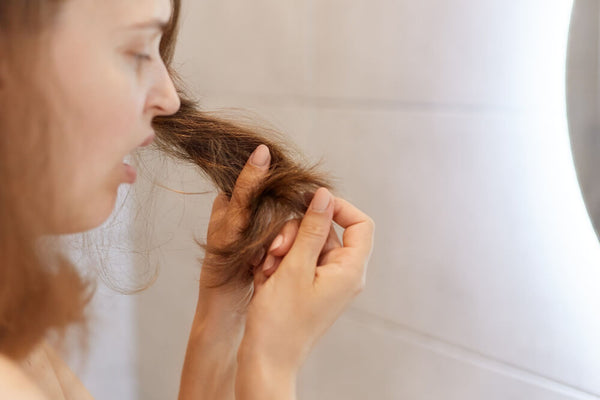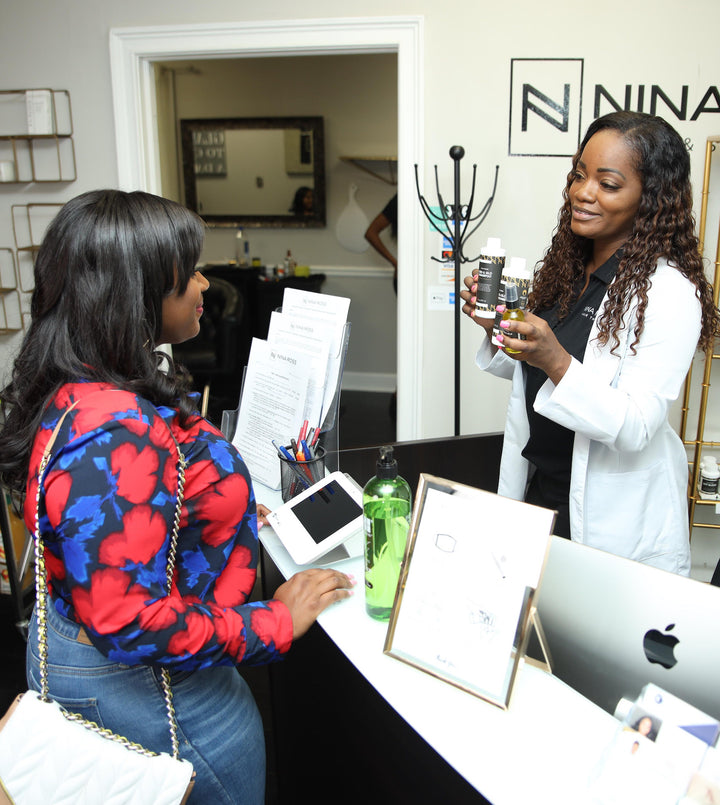Let me tell you about Jasmine—a client who sat in my Buckhead office crying from sheer relief. "I thought I was the only one," she whispered, her fingers unconsciously tracing the thin spot above her ear she'd been hiding with creative parting for months.
She'd been pulling her hair out since college—during late-night study sessions, in traffic, while scrolling through emails. The shame was eating her alive. She'd tried everything to stop, from wearing gloves to snapping rubber bands on her wrist. Nothing worked.
If you're reading this and seeing yourself in Jasmine's story, I need you to hear this: This isn't a bad habit. This isn't a character flaw. This is trichotillomania.
And more importantly, you're not alone, and you're not broken.
What's REALLY Happening When You Pull
Trichotillomania isn't about vanity or "being stressed." It's a legitimate mental health condition where the act of pulling gives your nervous system a moment of relief. That tension before you pull? The strange sense of calm after? That's your brain chemistry seeking regulation, not some personal failing.
Most pullers I work with describe it exactly the same way: "It's like this building pressure until I pull, and then... peace." The problem is that peace comes at the cost of your hair—and your self-esteem.

The 5 Things Nobody Tells You About Trichotillomania
1. The "Good" Sessions vs. The "Bad" Ones
Sometimes you're aware you're pulling (focused pulling). Other times, you zone out and come to with a pile of hair beside you (automatic pulling). Both are common, and both respond to different strategies.
2. The Texture Matters
Many of us with textured hair are searching for that "perfect" coarse or wiry strand. The ritual of finding it, examining the root bulb, rubbing it between your fingers—that's all part of the cycle.
3. The Hiding is Exhausting
You've become a master at creative parts, strategic styling, and avoiding windy days. The mental energy you spend concealing bald spots is draining you more than you realize.
4. It's Often Misdiagnosed
I can't tell you how many women come to me after being told they have alopecia areata or scarring alopecia. The distinctive broken hairs of different lengths and the unusual patterns of trichotillomania are obvious to a trained eye.
5. Willpower Alone Doesn't Work
Telling someone with trich to "just stop" is like telling someone with depression to "cheer up." This is neurological, not motivational.

Our Approach: Healing the Hair AND the Urge
At Nina Ross Hair Therapy, we understand this is a dual battle—you need to regrow your hair while learning to manage the impulses. Here's how we approach it differently:
We Start with Compassion, Not Judgment
The shame lifts the moment you sit in our chair and realize we've seen this before. We understand the relief-tension cycle, the hiding, the frustration. You don't have to explain yourself here.
We Address the Physical Damage
While you're working on the pulling, we help your hair recover:
-
Scalp treatments to soothe the inflamed follicles
-
PRP therapy to stimulate regrowth in damaged areas
-
Gentle haircare protocols that don't trigger the urge to "search" for textured strands
We Connect You with the Right Mental Health Support
We partner with therapists who specialize in Cognitive Behavioral Therapy and Habit Reversal Training which are the gold standards for trich treatment. We help you:
-
Identify your pulling triggers (boredom? stress? certain textures?)
-
Develop competing responses (what to do instead of pulling)
-
Process the underlying anxiety or OCD components
We Create Practical Strategies
Like teaching you to wear a silk bonnet during TV time (when most automatic pulling happens), keep your hands busy with textured fidget toys or even use scalp sprays that make hair "slippery" and less tempting to pull.
What Recovery Actually Looks Like
Recovery isn't about never pulling again—it's about reducing the frequency and intensity. It's about catching yourself sooner. It's about having more good days than bad ones.
The hair regrowth will come. But first comes the freedom from shame. The ability to sit through a movie without pulling. The confidence to go to the salon without making excuses.
You Don't Have to Fight This Alone
If you're tired of hiding, tired of the cycle, tired of feeling like nobody understands, book your Hair Therapy Evaluation with us today for just $99. Let us help you regrow your hair while you learn to quiet the urge to pull.














